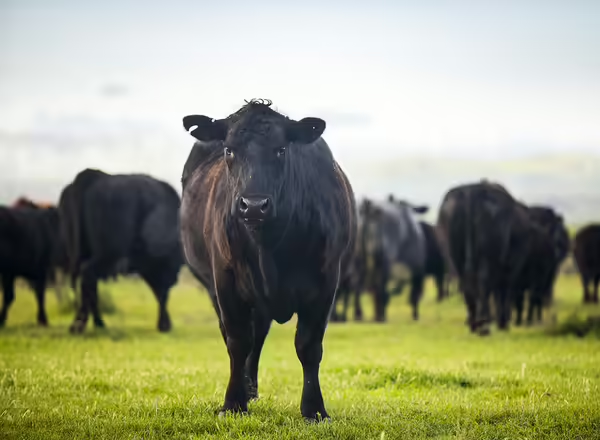Effectively integrating livestock in your operation can be done in a variety of ways and can benefit you, the soil, and the animals.

Rotational grazing is just like it sounds: rotating animals to graze in different pastures on a given schedule. This allows for land to rest and regenerate while other areas that would normally not be utilized are grazed. Continuous grazing or grazing in one area can lead to depleted or weakened root systems, increase erosion, and often lessen forage quality, leading to decreased animal performance.
There are many benefits to choosing to implement rotational grazing, including:
- Animals become less selective and rather than exclusively eating desired plants, they choose less desirable ones as well. This fosters growth and diversity in the plants that are growing.
- You are able to harvest more of what is produced per acre as animals start eating invasive grasses and weeds.
- The longer the rest period plants will be able to replenish and establish strong roots.
- The increase of soil organic matter will increase water holding capacity in the soil.
- The more caretakers see the animals, the more likely they will be to catch any health issues among their herd.
- Constantly moving livestock can help decrease pest problems
Permanent pastures can capture carbon, reduce farm emissions, and feed livestock, all while diversifying financial investments and lessening the financial risk that specializing in one enterprise can cause.
An alternative to rotational grazing pasture is having livestock graze cover crops. This technique is especially useful for those who use cover crops in combination with no-till practices because animals can graze cover crops off while simultaneously working their manure into the soil.
When managed efficiently, animals can eat cover crops and grass that protect the soil, and then in return, animal manure naturally fertilizes the soil and builds its health.
Challenges of Grazing Cover Crops
- Lack of water supply
- Lack of fences
- Labor demands
Benefits of Grazing Cover Crops
- Increase of manure in the soil
- Less feed costs
- Promotes Diversity
- Can help with weed control
- Spreads financial risk over different enterprises
- Allows animals to graze